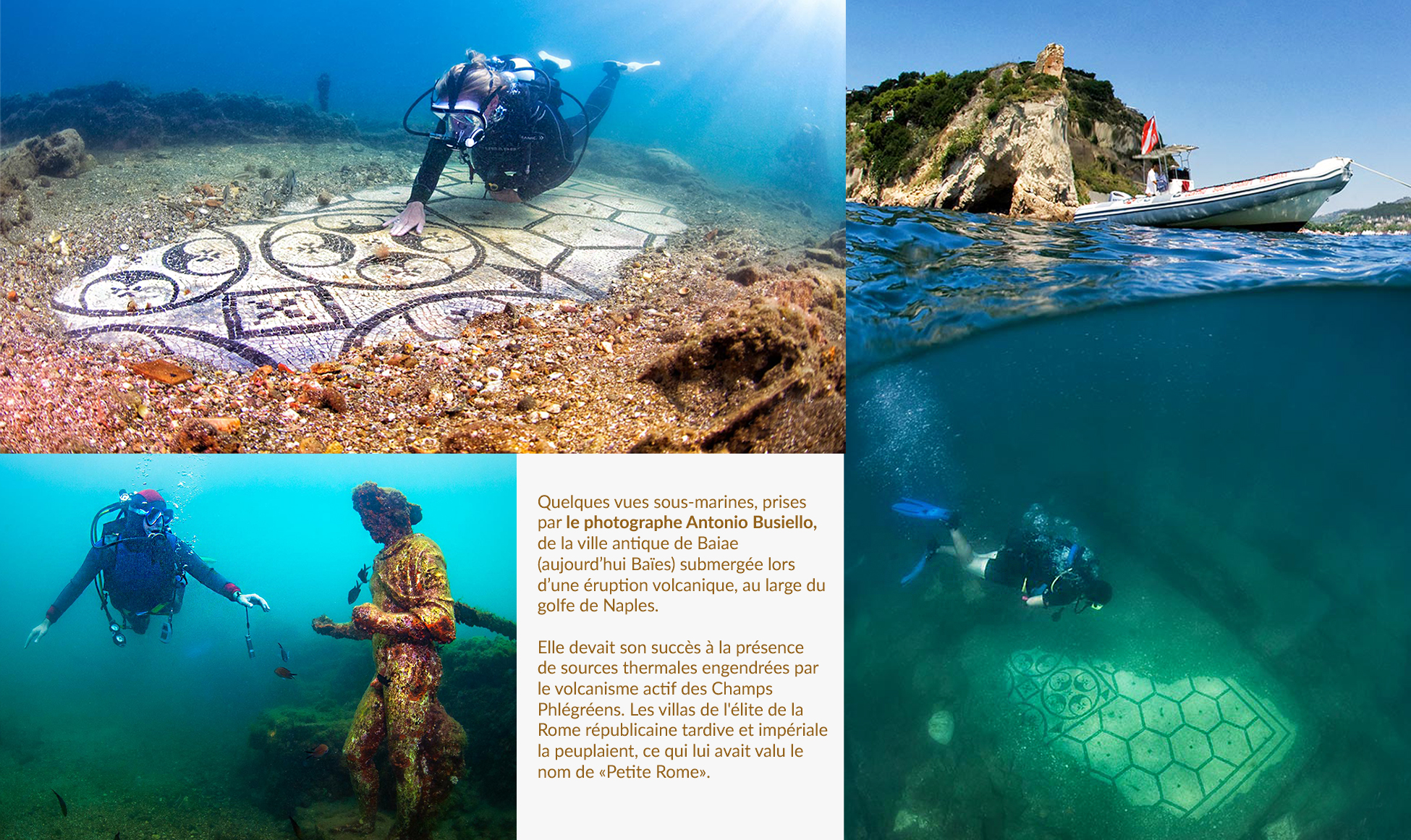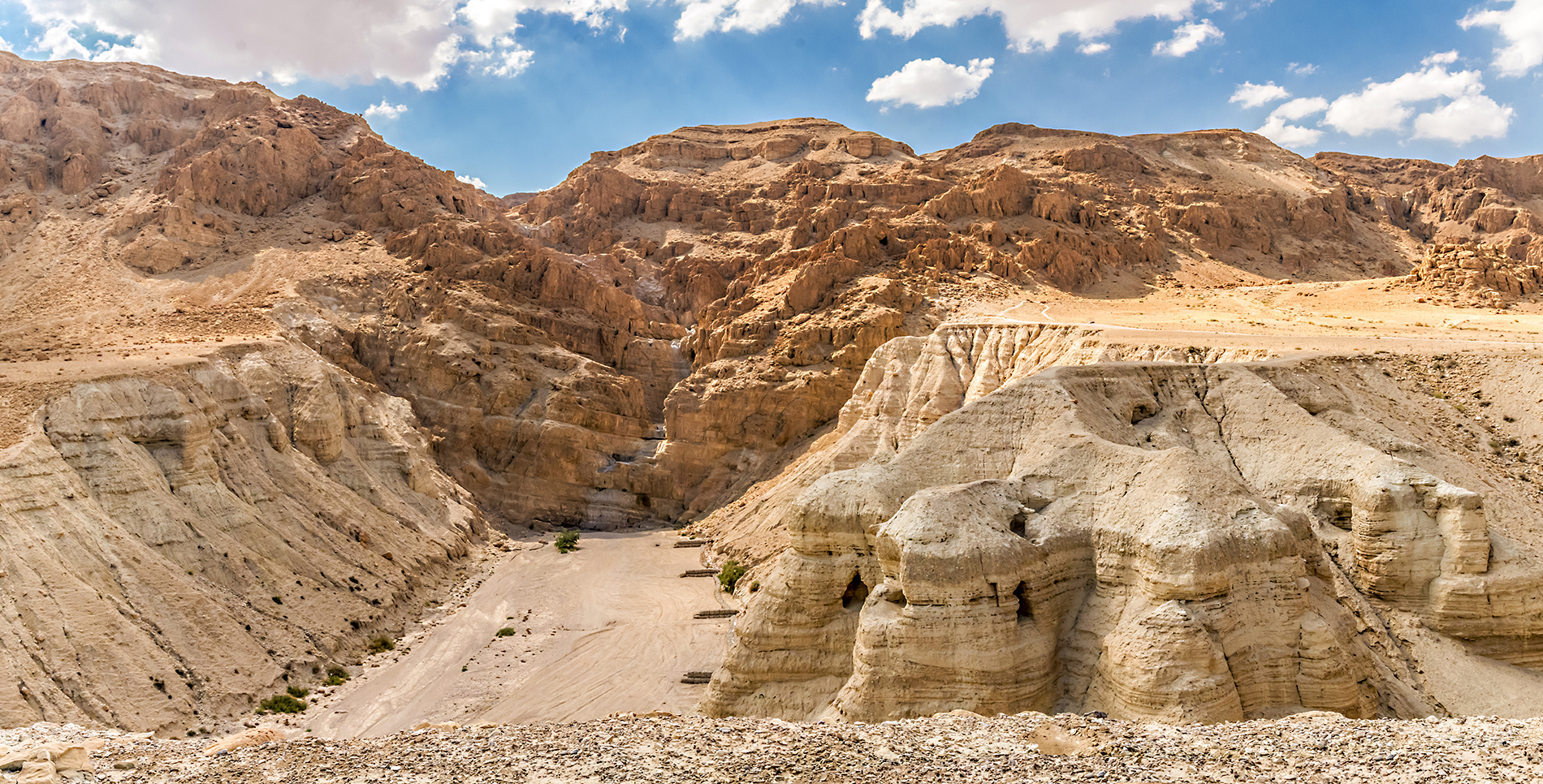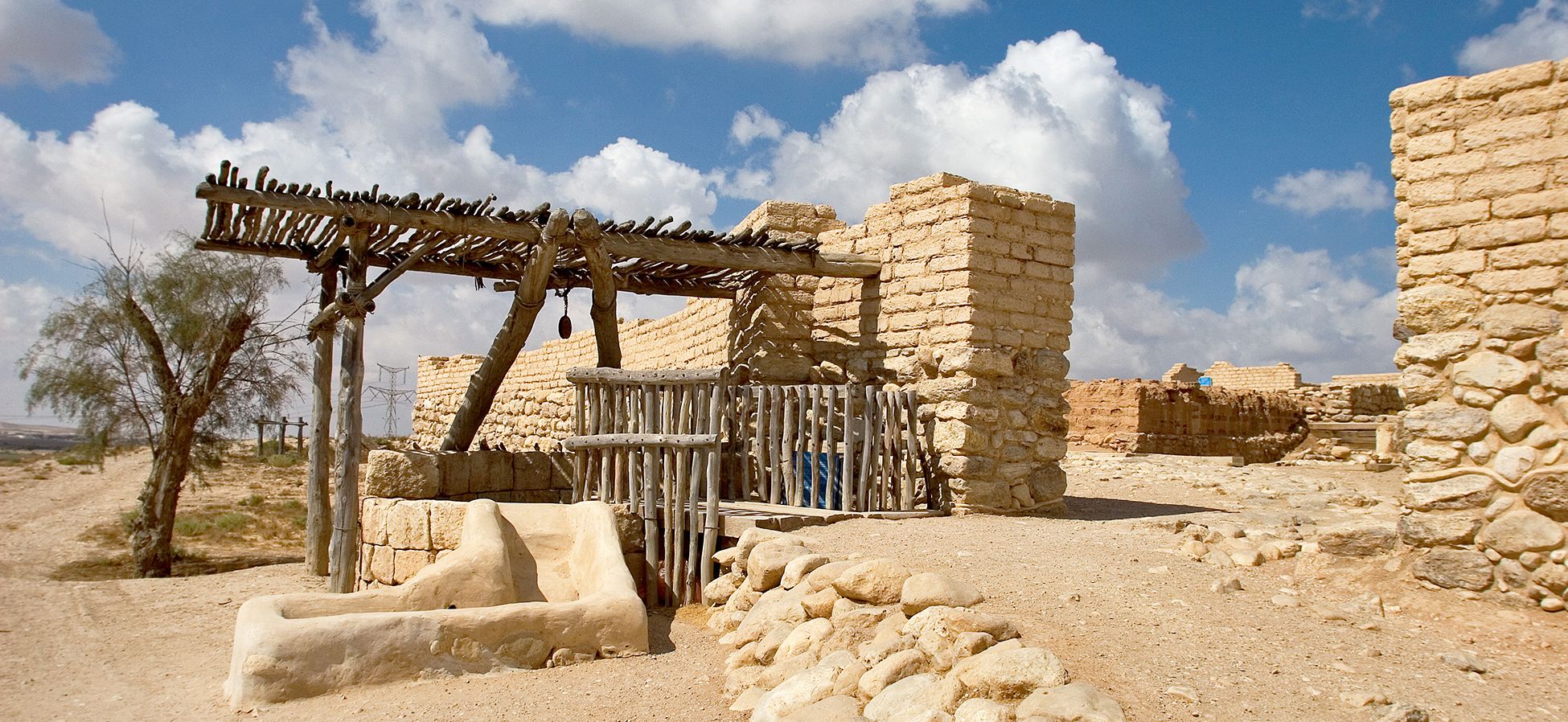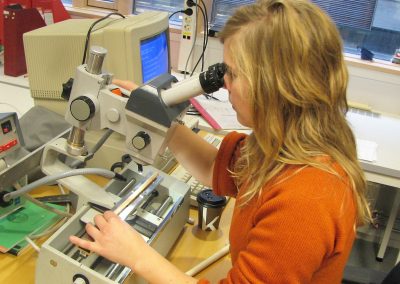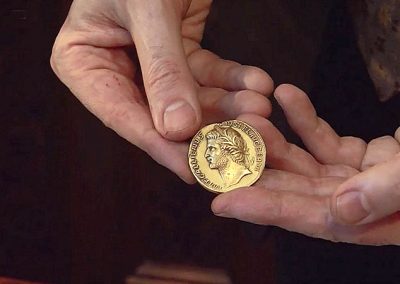
Bible, History, Archaeology
Bible,
History,
Archaeology
Archaeology
and the Bible
Definition of archaeology

For this work, the archaeologist has a panoply of tools at his or her disposal: fieldwork (excavations and prospecting), scientific work (carbon 14, dendrochronology, thermoluminescence, etc.) and, where appropriate, consultation of texts contemporary with the material traces being studied. Using these tools, the archaeologist analyzes the material produced by man to determine the relationships he maintained with his environment.
Image opposite Archaeology students unearth a skeleton during excavation of the Philistine cemetery at Ashkelon National Park. REUTERS /Amir Cohen.
Archaeology is about reconstructing the life and history of people in the past, using the traces they have left behind. (ruins, bones, tools, paintings, pottery, weapons, coins, jewelry, clothing, etc.).
Below: some underwater images of the submerged city of Baiae, first excavated in 1923 by Amedeo Maiuri. Antonio Busiello Photography.
→ http://www.antoniobusiello.com/
The pioneers of biblical archaeology«
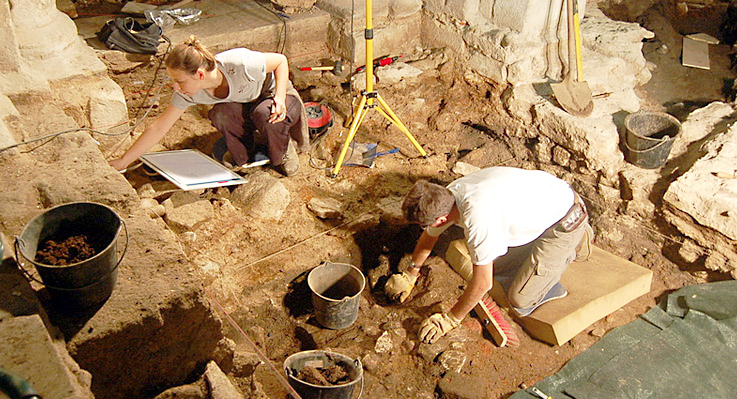
Image opposite An overview of excavations by two archaeologists. © Les métiers de l'archéologie/Musée d'archéologie et l'Histoire de Visé/Cécile Lensen.
In this field, archaeology has enriched our knowledge of all the biblical countries, i.e. the Levant, Egypt, Assyria, Babylonia, Persia, Asia Minor, Greece and Italy (Rome)..
The site of Qumran, near the Dead Sea in the Judean desert. It was in these caves that precious manuscripts were unearthed:
the Dead Sea Scrolls, now on display at the Israel Museum, Jerusalem. Many scientists consider this one of the most important discoveries of the 20th century © Alefbet.
The basics of biblical archaeology

Image opposite: 3,800-year-old pottery (detail) discovered in Yehud, central Israel. AAI.
The highlight of the early excavations was probably the work carried out by Charles Warren between 1867 and 1870 around the Temple Mount in Jerusalem, where he studied the foundations of Herod's Temple and explored Hezekiah's tunnel, with its commemorative plaque featuring the famous paleo-Hebrew inscription, now on display in the Istanbul Museum.
Subsequently, this discipline developed thanks to organizations such as the Palestine Exploration Fund (1865), the Deutscher Palästina-Verein (1877), the École Biblique (1890), which became French Biblical and Archaeological School of Jerusalem, l’American School of Oriental Research (1900), today the’Albright Institute of Archaeological Research, the British School of Archaeology (1919) and those of major American universities (Chicago, Pennsylvania) and the Hebrew University of Jerusalem. This work initially led to the mapping of the region and the identification of biblical sites.
Beersheba is an important archaeological site.
City of the tribe of Simeon in the southern Levant (Negev), on the edge of the Israelite territory which, in the time of David and Solomon, extended «from Dan to Bersheba» (Judges 20:1). The city of Bersabee (Beersheba), whose name probably means «well of the oath», was famous for its sanctuary linked by biblical tradition to the patriarchs Abraham, Isaac and Israel-Jacob, then to the sons of Samuel. © Doron Nissim.
The new methods
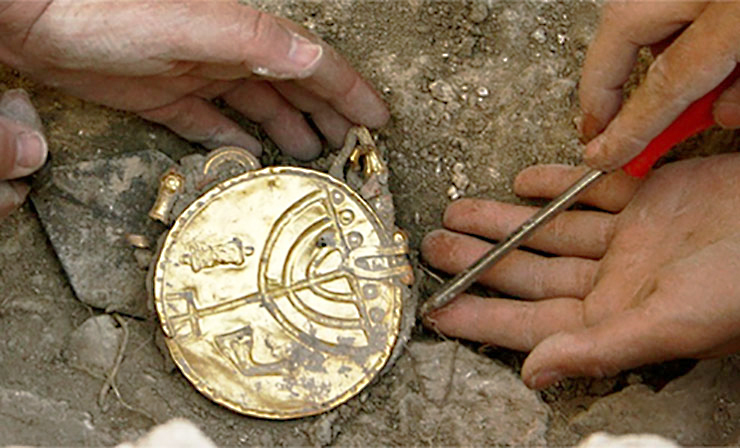
In the 1930s, under the impetus of Professor William F. Albright, this discipline was applied by several explorers, including Yigael Yadin (in the 1950s), who travelled the Levant in search of the various places mentioned in the Scriptures.
Image opposite: Archaeologists find a gold medallion on Jerusalem's Ophel dating back 1,400 years. © Ouria Tadmor/Eilat Mazar.
At the beginning of the 20th century, excavations focused on major sites such as Jerusalem, Gezer, Megiddo, Jericho, Samaria, and still today in Iraq on the ruins of Babylon, with the German archaeologist Koldewey.
After the Second World War, the discipline was further developed by Kathleen M. Kenyon; her method, used at the Jericho and Jerusalem sites, consisted of digging in squares (5 m on each side) separated by earthen walls (berms).
In the late 1950s and the following decade, a group of American archaeologists, including G. Ernest Wright and David Noel Freedman, in collaboration with Israeli researchers Yigaël Yadin, Benjamin Maazar and Nah-man Avigad, put these new methods into practice on virgin or already explored sites: Hatsor (today Tell el-Qidah), Ashdod, Gezer and Jerusalem.
During the 1970s, archaeology benefited from the contribution of the natural, social and environmental sciences. Computer scientists, geologists, anthropologists, climatologists, ethnologists, zoologists and others joined forces with archaeologists to collect and interpret data. Finally, from the 1970s onwards, after much controversy over attributions and dating, so-called «biblical» archaeology gave way to archaeology tout court.

Above: the Giza plateau, 18 km from Cairo, with its three famous pyramids: Khufu, considered in ancient times to be the Seventh Wonder of the World, Kephren and Mykerinos. The Giza Sphinx can be seen in the foreground. Archaeological excavations are still ongoing, in particular at the Pyramid of Cheops. © givaga 1810839265.
Archaeomagnetism is a branch of paleomagnetism that focuses on the study of the earth's magnetic field patterns recorded in archaeological materials. Public domain.
Archaeomagnetism is a branch of paleomagnetism that focuses on the study of the imprint of the Earth's magnetic field.
Dendrochronology is a scientific method used to obtain dates for pieces of wood to the nearest year by counting and analyzing the morphology of tree growth rings. Public domain.
Dendrochronology is a scientific method for dating pieces of wood to the nearest year by counting and analyzing the morphology of growth rings.
Numismatics is the study of coins and medals. Considered an auxiliary science to history, it is particularly useful for research into ancient history (especially Roman and Greek). It is also used in archaeology, in particular as a dating criterion. Public domain
Numismatics is the study of coins and medals. Considered an auxiliary science to history, it is particularly useful for research into ancient history (especially Roman and Greek). It is also used in archaeology.
Mosaic is a decorative art in which fragments of stone (marble, granito), colored stone, enamel, glass or ceramic are assembled with putty or plaster to form patterns or figures. Whatever the material used, these fragments are called tesserae. Public domain.
Mosaic is a decorative art in which fragments of stone (marble, granito), colored stone, enamel, glass or ceramic are assembled with putty or plaster to form patterns or figures.

Find out more
TRUSCHEL Théo, The Bible and archaeology.
Collection Histoire et Archéologie, Les Beaux Livres.
Éditions Louis Faton, 2010.
This lavishly illustrated book presents the biblical story from Abraham to the apostle John and his Apocalypse.
Its originality stems from the paralleling of biblical tradition with historical figures, from both the First and New Covenants, situated in what we know today of this civilization and those of the surrounding countries. Questions about the writing and transmission of documents are addressed in the very first chapter.
Numerous richly illustrated hors-texts present archaeological discoveries in Israel, Egypt, Iraq and Iran, and their sometimes controversial interpretations. They deal with the specific study of sites (Samaria, Mount Ebal, Tanis, Elephantine Island), certain stelae (Mesha, Tell Dan, Merenptah) and various exhumed objects (ivory grenade).
The period studied covers some twenty centuries, from the patriarchs and the Mosaic Covenant of the Hebrew people to the beginnings of Christianity.

